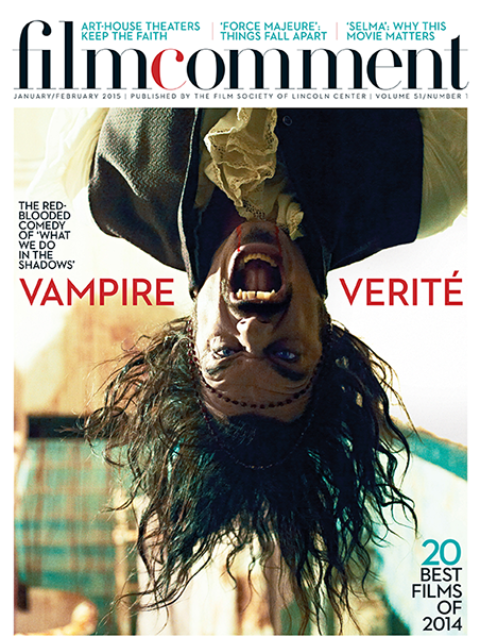
A big-screen treatment of Broadway deity Stephen Sondheim’s fractured 1987 fairy tale Into the Woods would seem a no-brainer, even in our notably anti-musical era. Mainstream cinema is now sufficiently postmodern (and post-Shrek) to make Sondheim’s once radical conceit—the intermingling of a handful of iconic Grimm stories, driven by characters wise enough to control their own fates and thus subvert the narrative contraptions in which they find themselves—seem like just another self-reflexive night at the movies. But it’s hardly a surprise to those familiar with the stage production that it’s taken this long to happen.
What makes the source material a difficult proposition for adaptation into marketable multiplex fare is surely not its inherent darkness—not only does one expect a proper fairy tale to be dark, but the very word has become shorthand for a sort of adult sophistication in American culture, from serial television to superhero movies. No, the challenge of Into the Woods is that it is designed to be intentionally unsatisfying, a conceptual gambit that is clearly borne out in the play’s vital two-act structure. By the end of act one, Cinderella, Jack (of beanstalk fame), Red Riding Hood, Rapunzel, two Prince Charmings, a baker and his wife, and a wicked witch have found their Happily Ever Afters; by the time act two begins, they have already settled into their respective ruts, finding out that Happily Ever After isn’t all that it’s cracked up to be, and are then further disillusioned by a large-scale disaster that puts their morals to the test. A universe once Manichean is revealed as all gray areas, as knotty as the branches in a deep, dark forest. Zippy and cheeky, the first half gives the viewer the thrill of invention, the pleasure of seeing tried-and-true tales pinballing off each other with ease; dour and disconcertingly unsentimental, the second part leads to little more than its characters’ quiet reconciliation to a disappointing world.

One needs a proper intermission, perhaps, to let this crucial bifurcation work its strange magic, and Disney’s movie version, directed by Rob Marshall, all but skips right over the gap, scrambling to the forlorn finish line. Yet even if viewers new to Sondheim’s meticulous piece of mischief miss the point of divergence, they’re unlikely to miss the point, so strong is this great artist’s worldview. As both play and movie, Into the Woods successfully operates on two levels: to celebrate the durability of fairy tales yet also reveal their shortcomings.
Marshall, who turned Bob Fosse’s Chicago into an Oscar-winning hit by abstracting its musical numbers and editing around a conspicuous cast of non-dancers, here keeps the camera close to his actors, cutting between their individual spaces. Considering the interlocking characters and overlapping rhythms of Sondheim’s music, this makes perfect sense, and the film’s first movement, set to the rollicking, endlessly looping title tune, is especially winning, buoyed by some effective casting, including Anna Kendrick as a no-nonsense Cinderella, Lilla Crawford as a haughty Red Riding Hood, and of course inveterate scene-stealer Meryl Streep as the mean-but-not-quite-evil witch—all of them vocally capable enough to wash away any musical lover’s lingering doubts. The most inspired choice may be Emily Blunt, singing beautifully as the long-suffering baker’s wife, the character who ties together the story’s various strands: the witch tasks her and her husband (James Corden) with retrieving totems known to us from other fairy tales (e.g., Jack’s cow, Cinderella’s slipper) in exchange for lifting a generational curse that leaves them childless.
The movement of the plot is of course entirely beholden to the complexity of Sondheim’s music (often polyphonic and occasionally dissonant) and lyrics (the witch’s description of her trampled beloved garden is a particular delight). Here, Sondheim’s cleverness is fascinatingly at odds with a direct morality plainspoken enough for any children who may be listening. The startling thing about the composer’s approach to his fanciful characters’ realities is not that he goes “dark,” but that he dares to foreground pragmatism and honesty. When, during the achingly beautiful climactic number “No One Is Alone,” one character sings, “Witches can be right / Giants can be good / You decide what’s right / You decide what’s good,” it’s so pure it strikes like a lightning bolt.








